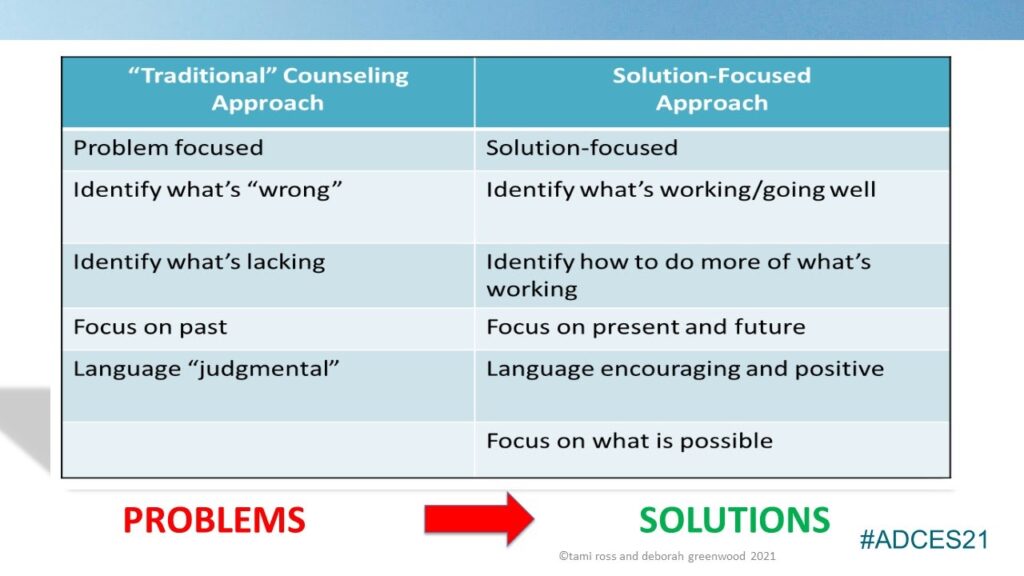Self-care is how you take your power back. – Lalah Delia

We recently returned from the ADCES23 conference in HOT Houston and are still processing all that we heard and learned from the speakers and exhibitors! This was an extra special conference as we were celebrating the 50th Anniversary of the Association. As Past Presidents, both Tami and Deb were recognized on-stage during the opening session. There were so many special events and opportunities to network with colleagues and friends, both old and new.
As we close out our summer self-care series, two sessions that particularly resonated with us that we want to share were presented by. Lauren Plunkett, RDN, LD, CDCDES, Frame a Healthy Relationship with Food Using Nutrition-Focused Language Skills and an engaging presentation by co-presenters Dr. Natalie Bellini, Dr. Diana Isaacs, and Dr. Sean Oser, Use Time in Range to Congratulate, Celebrate, Recognize, Align and Partner. (Lauren’s presentation is available On-Demand if you registered for the conference and didn’t catch it live.) All of these speakers emphasized the power of words and how we, as healthcare professionals (HCPs), can inspire self-care through the words that we use by using empowering language.
Optimistic Coaching & A Positive Food Vocabulary
Lauren, a person living with diabetes (PWD) reminded us that PWD have it in themselves to be exceptional! She acknowledged the significant impact that diabetes has on emotional health and that awareness of emotional health can help sharpen communication skills.She encouraged leading client/patient encounters with a positive attitude and engaging in “optimistic coaching” to support self–efficacy and quality of life. GIven that she’s an RDN, her particular focus was around addressing immediate needs and using positive food vocabulary, such as “colorful”, “flavorful”, “nourishing”, and “abundance”. She reframed food as “energetic nourishment” and that eaters focus on quality and addition (such as eating more plants, more fiber) rather than subtraction.
Asking Questions and Focusing on the Positive
During the discussion on time in range (TIR) the speakers emphasized that getting to know your patients can help to understand their daily lives which will lead to a greater understanding of their challenges and successes with diabetes management. When reviewing ambulatory glucose profile (AGP) data, HCPs were encouraged to find something positive to discuss, no matter how small. Only focusing on the negative is not empowering. As we @AFreshPOVforYou have discussed before, these presenters reminded the audience to not focus on data as “good” or “bad” but as neutral in order to help reduce the stigma often associated with diabetes. In addition, the presenters recommended technology to support people with diabetes in their management. While this ADCES23 presentation is not on-demand, we’re told there may be a repeat at the December ADCES Technology Conference.
We welcome anyone interested in our approach to Subscribe to our blog and we’ll email you when a new post is published!
If you are a health care professional and interested in learning more about our solution-focused practice and approach, when you subscribe to our blog, we’ll send you in return a FREE resource of 10 Solution-Focused Questions to start a solution-focused discussion with your clients.
Follow us on Twitter and Instagram @AFreshPOVforYou
Deb is employed by Dexcom, but her words and opinions in this blog are her own.
Tami is employed by the University of Kentucky HealthCare Barnstable Brown Diabetes Center, but her words and opinions in this blog are her own.













